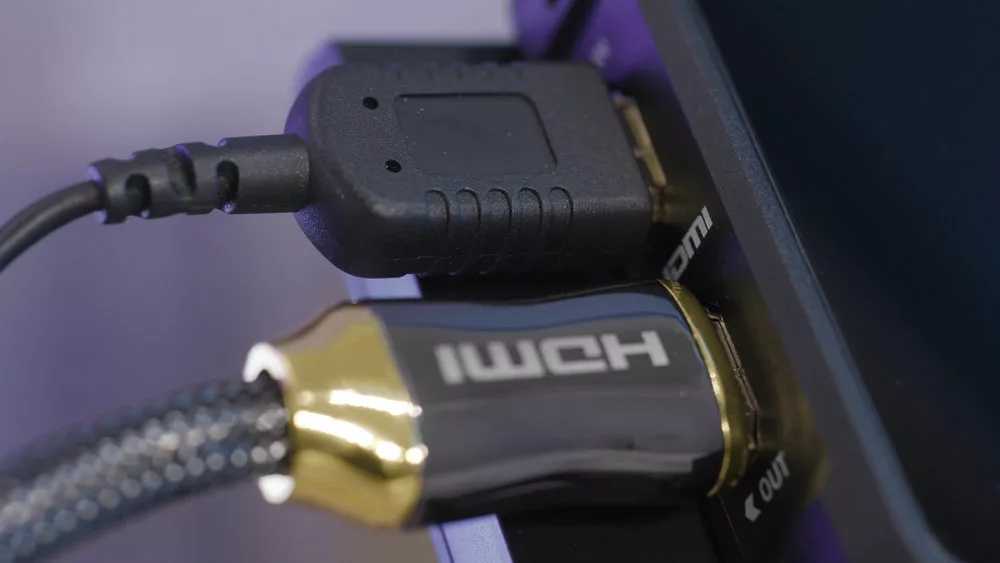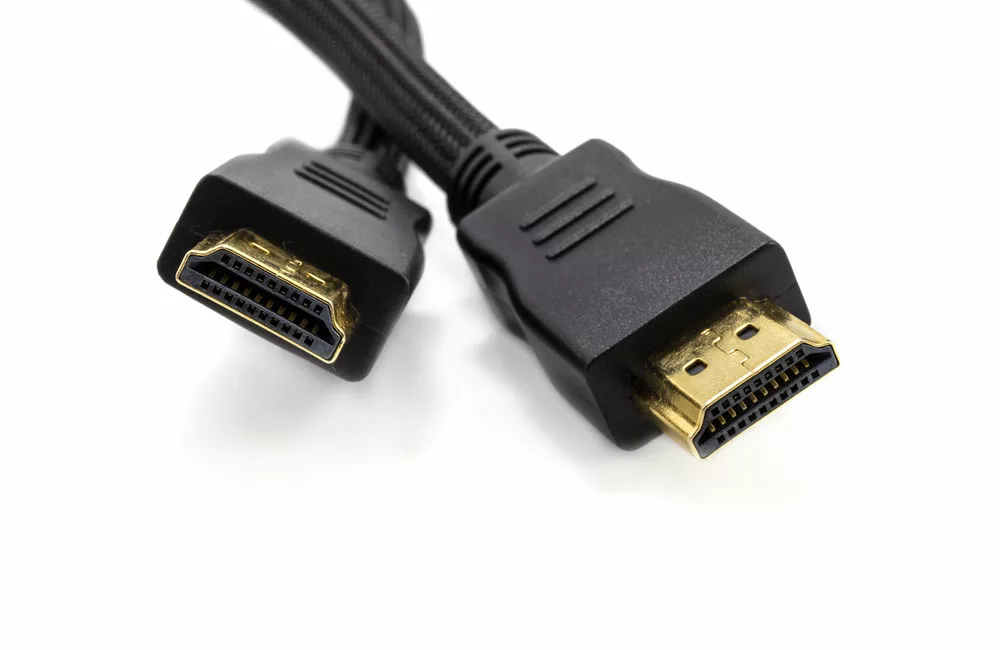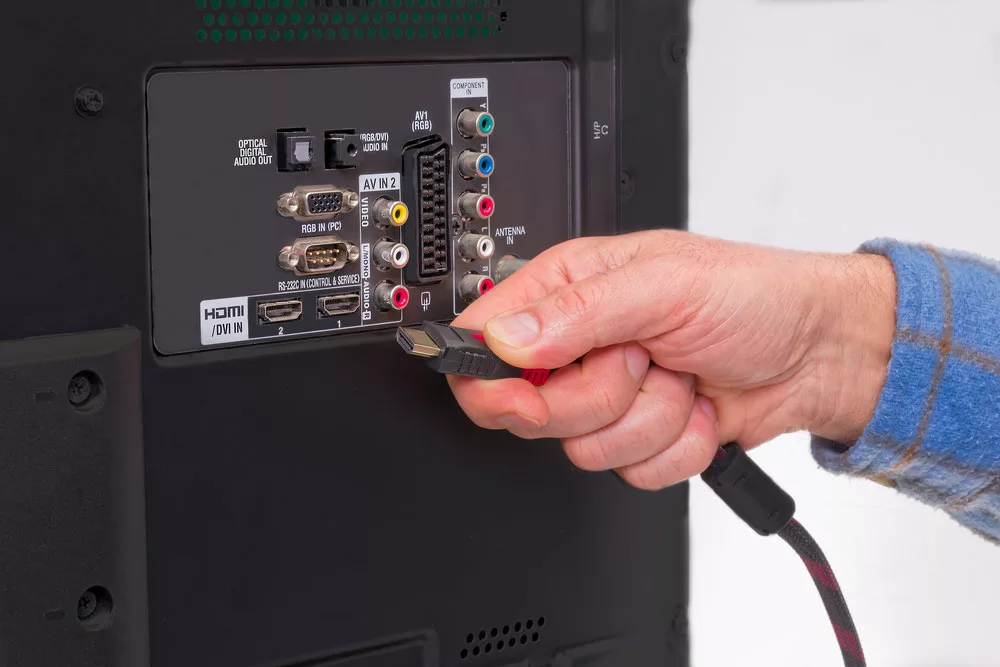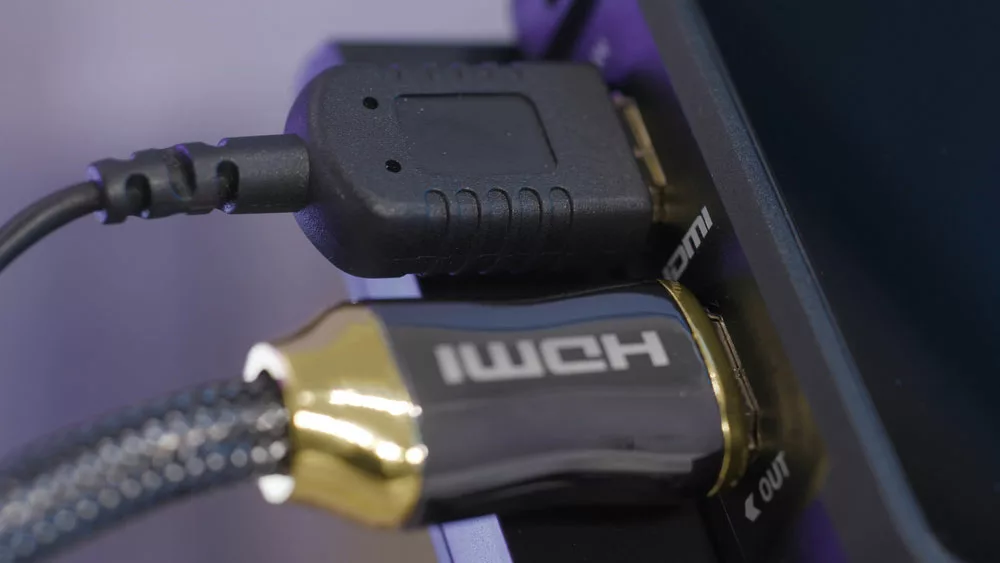Can A Bad HDMI Cable Cause Lag? If you see the actors aren’t lip-syncing correctly, you’re experiencing input lag.
The HDMI interface is one of the most widely used display interfaces. It can transmit audio and video signals while preserving data security.
While an HDMI cable facilitates high-definition connection with several devices, input latency makes the experience unpleasant.
So, you must know the answer to the urgent question, what causes the lag, can a bad HDMI cable cause lag, or how to stop HDMI input lag?
Before understanding them, let’s know more about HDMI lagging.
Table of Contents
- What Is HDMI Input Lag?
- So Does HDMI Cable Cause Lag?
- How Do I Fix the Lag caused by the HDMI Cable?
- Other Things You Can Do to Decrease HDMI Input Lag
- Conclusion
What Is HDMI Input Lag?
There are different types of lags. Some lags are related to a decreased frame rate, while others are brought on by tearing. Input lag describes the time the audio or video signal takes from the source device to your TV or monitor screen.
In other words, you experience a delay between hitting a button and the game or image responding on the screen. A 15ms (milliseconds) input lag delay is acceptable in the tech and gaming communities.
You will likely experience HDMI input latency when the TV’s resolution exceeds your laptop’s native resolution. It results from the processing latency in the HDMI-receiving device, such as a TV, monitor, or game console.
It is a subtle yet important component that some players overlook.

HDMI ports
So Does HDMI Cable Cause Lag?
If an HDMI cable is physically and visibly in good shape, which HDMI cables often are, it does not create any delays. Most of the time, a lag doesn’t occur due to a fundamental flaw in the HDMI cable, connection, or port.
In other words, you cannot attribute an input lag to the HDMI cable itself unless the HDMI connector on the cable or the HDMI port is physically broken.
In other words, the HDMI interface does not affect the input latency. The TV’s chips process it, and better microchips result in less input lag.
However, this does not imply that there won’t be any lag when you use HDMI connections with your TV. Your output device may lag if the HDMI cable is broken, damaged, or of poor quality.
A broken cable can’t carry the signal smoothly. Also, the output device may lag if the HDMI port is cracked, rusted, or otherwise damaged. The damaged one will prevent the signal from being properly sent via the port to the HDMI cable.

HDMI cables in good condition
How Do I Fix the Lag caused by the HDMI Cable?
Once you’re certain that your HDMI cable is the cause of the latency, try the following fixes:
Unplug and Re-plug the HDMI Cable
Your output device can lag if static electricity is inside the HDMI cable. Fix it by plugging both devices’ HDMI cables out. After that, unhook the power cables and connect the HDMI cables to both devices after 10 seconds. Ensure both devices’ power cables are re-plugged.
Replace the HDMI Cable
Sometimes the input lag happens if the HDMI cable has irreversible damage. If so, the HDMI cable has to be changed. For example, try a premium, fast HDMI cable.
Ensure your TV or monitor can display 4K video, and the HDMI connection can smoothly send a 4K signal.
Check the HDMI Compatibility
Ensure your output device and the HDMI cable are compatible. For an HDMI cable, several standards are accessible, including 1.0, 1.1, 1.3, 1.4, 2.0, and 2.1.
If you are using HDMI 2.1 and your display only supports HDMI 1.4, the visual output will be choppy, and you will undoubtedly experience latency.
Avoid HDMI Splitter
If you use an HDMI splitter to connect numerous devices, you can experience latency when watching video on your display. The transmission speed of an HDMI splitter differs from that of an HDMI cable.
Avoid the HDMI splitter, especially if you’re playing HD games or watching 4K video at high quality.

The HDMI input.
Other Things You Can Do to Decrease HDMI Input Lag
Thankfully, there are a few ways to improve reaction times. Here are some great suggestions for reducing input lag if it’s harming your gaming experience.
Turn Off Picture Enhancing Or Altering Features
You can lessen HDMI input lag by disabling picture enhancing or modifying functions. Some features, such as picture processing, motion smoothing, or upscaling, can cause further delay as the display devices try to process a video signal. When you turn off these features, the display device reduces the amount of processing necessary to display the image, which can reduce the input lag.
Find the labels “MPEG Reduction,” “Noise Reduction,” and the oddly called “Mosquito Noise” deep under the picture options, and turn them off.
While these visual settings and reduction options may be fun to experiment with, they cause input lag by changing the signal between the console’s video output and the TV screen.
Test Out Other HDMI Inputs
It’s common knowledge that televisions and monitors have a variety of ports. What is not common knowledge is that the input lag levels of various ports vary. Additionally, some devices are specifically made for gaming.
Therefore, if you are experiencing HDMI input latency, try multiple ports to find the one that best meets your needs. Fortunately, there is no shortage of HDMI inputs to experiment with on most recent TVs.
There is always a potential that the input being used is more erratic than an empty one.
Use Separate Speakers
Most dedicated gamers will likely choose more robust, dynamic sound systems over the often subpar TV speakers. However, purchasing external speakers or a soundbar can be worthwhile if you would rather save money in this area.
The games will not only sound better, but they will also feel a little crisper, increasing the immersion even further.
When you use a separate audio system, you will experience more immediate pictures and movements on the screen. Separate speakers put less strain on the TV.
Lower The Resolution
Reducing the resolution of your game or app is another quick fix for HDMI input latency. Like on a big computer display, reducing the TV resolution helps play games more fluidly and quickly.
Usually, the HDMI connection might not handle your display’s high refresh rate or resolution, which would cause lag. Lowering the resolution reduces the burden on the graphics processing unit and increases the frame rate.
Any TV with a “display,” “options,” or “settings” menu will most likely include the ability to alter the aspect ratio. A 720p or 1080p resolution will increase the frame rate, improving the performance of your game. If you like, you can cut it even further.
Turn Off Power Saving Options
Most contemporary sets have at least a few energy-saving features which are practical and environmentally friendly. However, these features don’t do any favors regarding accurate, quick gaming.
You can reduce the HDMI input lag by turning off some power-saving options. Ensure you turn off any power-saving features like ambient screen dimming by looking at the different picture-related settings. Disabling these features can get around 10ms more time.
Disable HDMI-CEC
HDMI-CEC is abbreviated for “HDMI Consumer Electronics Control. It is a feature that offers compatibility with other devices. In essence, other CEC-enabled devices can command, control, and recognize the TV when it is on.
Disabling this setting can reduce the input lag. Although this mode is normally turned off by default, it could be worthwhile to check the advanced options to make sure it is. You can see a 10ms time reduction when this function is disabled.
Disable Motion Smoothing
Motion smoothing or settings can make videos more fluid and smooth, but they also provide a less acute input response for gaming. If you want to reduce input lag, check and disable this feature. You can find it someplace on the TV’s “picture choices” or “picture mode settings.”
Disabling motion smoothing may reduce input lag by roughly 30ms or less. It can also result in a sharper, more responsive experience.
Use Game Mode
You can also reduce HDMI input latency when you activate the game or PC mode on your television or monitor. Unsurprisingly, Game Mode is the main function or modification in reducing input lag. This setting is getting increasingly popular, though it is still far from universal.
It’s a collection of settings that have been pre-programmed and optimized for the optimum gaming experience, including minimal input latency. Using game mode disables all extra graphics, meaning you focus on what you’re doing.
Each brand and TV model will vary regarding where Game Mode appears on the menu and how successful they are. However, “Game Mode” is typically located under “image” or “general” options. Occasionally, you’ll need to dig a little further to locate it.

An HDMI connection.
Conclusion
HDMI input latency can be frustrating when playing video games or watching movies on your television. Knowing the solution to the HDMI input lag problem can help you have more responsive experiences and guarantee that your system is always operating at its best.
This article has explained every factor that causes input lag when using a subpar HDMI connection. We have also described several solutions to stop HDMI input lag. Visit our blog to learn more about HDMI cables.
